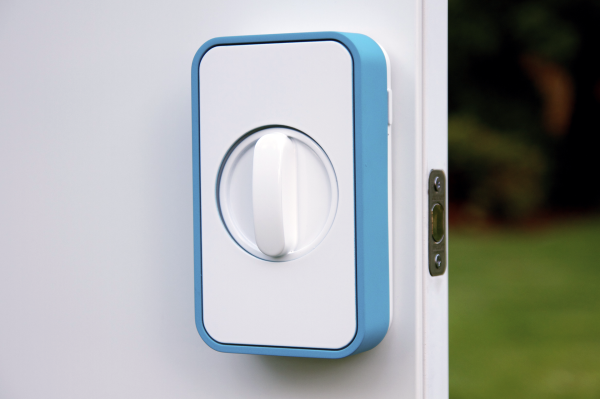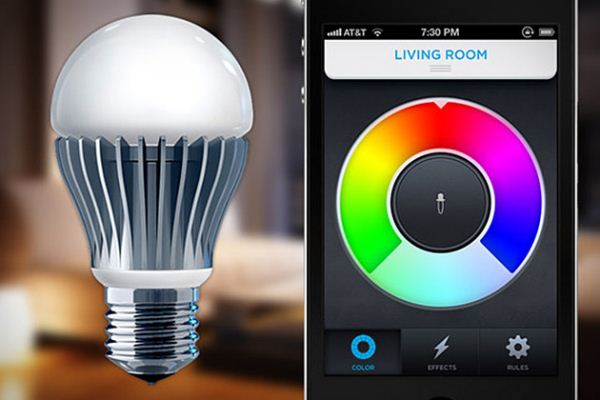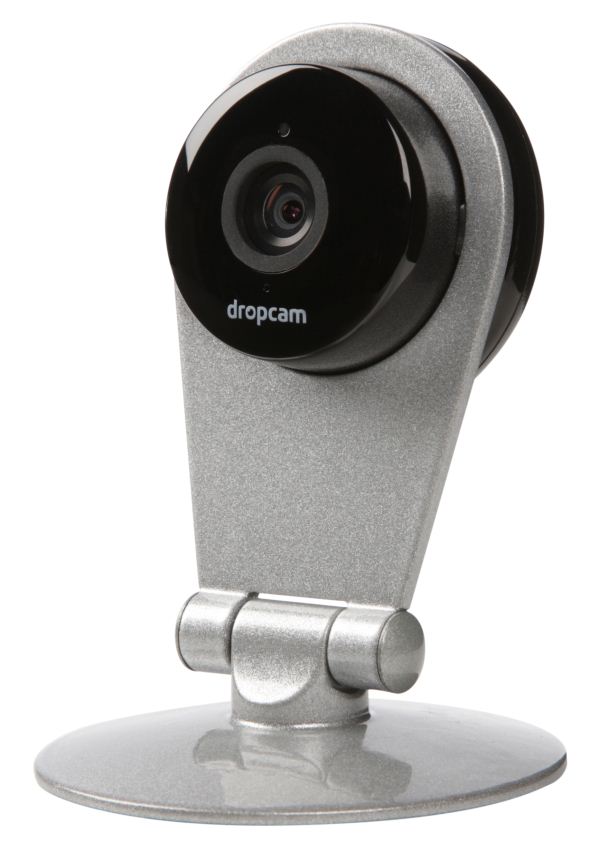Home Automation and the 'Internet of Things'
by Ganesh T S on October 4, 2012 10:30 AM EST- Posted in
- Gadgets
- Home Automation
- Wi-Fi
Crowdfunded initiatives have seen a sudden spurt thanks to the popularity of services such as Kickstarter and IndieGoGo. Since Wi-Fi is familiar to almost everyone with an Internet connection, crowdfunded initiatives involving Wi-Fi and the ‘Internet of Things’ have consistently been able to meet and even comfortably exceed their goals. The ease with which funding has been raised indicates the pent-up market demand for easy to use HA devices using infrastructure already in the hands of the consumers. In this section, we will take a look at some of the miscellaneous Wi-Fi enabled home automation devices which are already in the market / slated to appear soon.
Door Locks
Lockitron is a keyless lock which can be unlocked using a smartphone’s Wi-Fi, Bluetooth or NFC capabilities. It doesn’t replace the conventional lock, but fits over the existing one on the inside of the door while retaining the smartphone communication.
The product is expected to ship in March 2013. It is priced at $149 on pre-order. A mobile website / cloud backend ensures that any smartphone can control the unit, and it actually doesn't need to be connected to the local Wi-Fi network. The consumer doesn’t really need to be tied down to an iOS or Android device. Even older phones can access the unit using text messages. Importantly, the unit is based on the Atmel ATMega microcontroller, which is compatible with Arduino. Simple API endpoints are available, and users can also decide to program the unit themselves.
The LockState Connect LS-DB500i Wi-Fi deadbolt lock is another device slated to appear in the market soon. The company has a video of the unit in operation. Even though the device uses Wi-Fi, it seems to require only 4 AA batteries to operate (like other ZigBee / Z-Wave based devices). Battery life comparison will be quite interesting.
Lighting Control
Simple control of lighting equipment can be achieved through Wi-Fi power switches. However, some applications require dimming / brightness adjustment capabilities. National Control Devices offers a Wi-Fi light dimmer which provides up to 255 different brightness levels controllable over a Wi-Fi connection. However, with a total cost of around $380, it is targeted more towards industrial users rather than home automation. The ZigBee version costs around $320. Wi-Fi may not appear to be cost effective right now, but this doesn’t consider the external ZigBee router / controller needed for operation.
LIFX is one of the recent Kickstarter hits. The product is a Wi-Fi enabled LED light bulb. An interesting aspect to note is that only the master light bulb is Wi-Fi enabled to connect to the wireless network. The other bulbs communicate with each other and the master light bulb itself using a ZigBee 802.15.4 mesh network (which consumes much less power compared to Wi-Fi right now). However, the unit is quite costly, coming in at $69. As this market area garners more manufacturer interest, pricing will become better.
Alarms / Remote Monitoring with Wi-Fi : IP Cameras with Motion Detection
This is one of the classic use cases where Wi-Fi based home automation trumps any other low power alternative. Over the last few years, we have seen a number of Wi-Fi enabled IP cameras meant for surveillance purposes. At AnandTech, we have even reviewed some of them such as the Dropcam Echo, Compro IP70 and IP540. Technology advancements have reached a point where even 720p HD is available in IP cameras such as the Dropcam HD. Ease of use and control over Wi-Fi are some of the aspects that the manufacturers hope to get right in this market area. Almost all IP cameras can be configured to provide feedback based on motion detection (without an explicit motion sensor). Many of these devices can be controlled (Pan / Tilt / Zoom) using a computer or mobile app too.
Low power mesh networking technologies such as ZigBee and Z-Wave are simply incapable of the bandwidth required for video streaming over IP. In this situation, Wi-Fi (or wired Ethernet) is an option. As the control signals can easily piggy-back on the Wi-Fi / Ethernet connection, it really makes no sense to add ZigBee or Z-Wave capabilities to IP cameras. The only reason could be integration with an already existing home automation server, but, as we have taken effort to point out, the whole HA industry is slowly shifting towards a Wi-Fi centric model.













54 Comments
View All Comments
at80eighty - Thursday, October 4, 2012 - link
I have been poking around very recently to check out articles about this very topic, and wouldn't you know, you guys do something about it. thanks for the read.is this something you could be exploring as a series of articles? maybe something every few months; would love to know more in depth info esp. DIY stuff.
slickr - Saturday, October 6, 2012 - link
How is this awesome? Its 1984 on steroids. If you don't think government isn't going to use this to spy on your 24/7 and turn you into a mindless slave then you don't know history.Basically what you eat, what you drink, which appliances you use, how you dress, who you with, etc... will all be public for governments or hackers to get a hold of.
I think this is ridiculous, its bad, its negative, its Orwellian, its NAZI Germany like, its Brave new world like.
Axedall - Sunday, October 7, 2012 - link
How exactly do you think a government would use information like this? What are you eating that would anyone would be interested in? Babies? Are you dressing yourself in radioactive waste?And what makes you think that this information isn't available to pretty much anyone who wants it anyway? Do you use a credit card? Do you have a bank account (other than off shore)? A membership card for any kind of store? Unless you are using cash for every transaction you make, they are all being recorded and tracked. Not likely by the government, but certainly by corporations who will use it to tailor marketing strategies.
I'm surprised you are even using the internet. You realize that every website you visit can be tracked as well as your location don't you? Quick, better crawl back under a rock before 'they' find you!
As an aside... great article and thanks for providing information on emerging technology like this. Maybe some coverage on security issues would be a good idea, however, as this seems to be a pretty big concern for a number people. Admittedly, if I can control electrical appliances in my house remotely from a smart phone, someone else potentially could too.
rangerdavid - Sunday, October 28, 2012 - link
The only way you can prevent this from happening is by using this tinfoil. Wrap it around your head.Yes, just like that, but you missed the area covering your mouth.
There, better. :)
Violated - Tuesday, September 3, 2013 - link
Wow, I wish I would have read this last year! Slickr hit the nail on the head. I had Night Owl surveillance cameras outside my home and all new appliances and a new furnace, as well as a fully formally monitered security system. My ex while living here allowed access and set up basically a home I had no privacy, control or in reality ownership of. To make matters worse she was an especially vindictive woman and made me listen to unpeakable things via a RPC 2700/Ubuntu network she had secretly set up!!!I'm just finally figuring it all out, thankfully I'm still alie and can prove all the crazy things she's done.
DaveLessnau - Thursday, October 4, 2012 - link
And I'll bet that all these Home Automation vendors will put just a bunch of effort into hardening their products so that the fine people of our society won't hack our houses and turn our lives into living nightmares.Right.
Heck, they don't even harden medical devices. For that matter, they don't harden cell phones (which have turned into the core of people's lives).
DanNeely - Thursday, October 4, 2012 - link
If wifi wins the standard war anyone who has half a clue should be able to use WPA and a strong password to secure their HA systems. Granted the half clue needed to do so is a relatively high bar; but the clueless will break any other protection system too.k2_8191 - Thursday, October 4, 2012 - link
Agreed.I will never buy such network-enabled appliances.
I don't want to see my house flooded by hot water of a badly-designed spa :(
ntspam - Friday, October 5, 2012 - link
You can buy flood and freeze sensors that alert your phone. By the way you can pick and choose what you automate.aruisdante - Thursday, October 4, 2012 - link
Even if vendors do nothing, it's as secure as any home WiFi network is. All you have to do is enable WPA2 and its unlikely that anyone that would care is going to be able to get into your network.